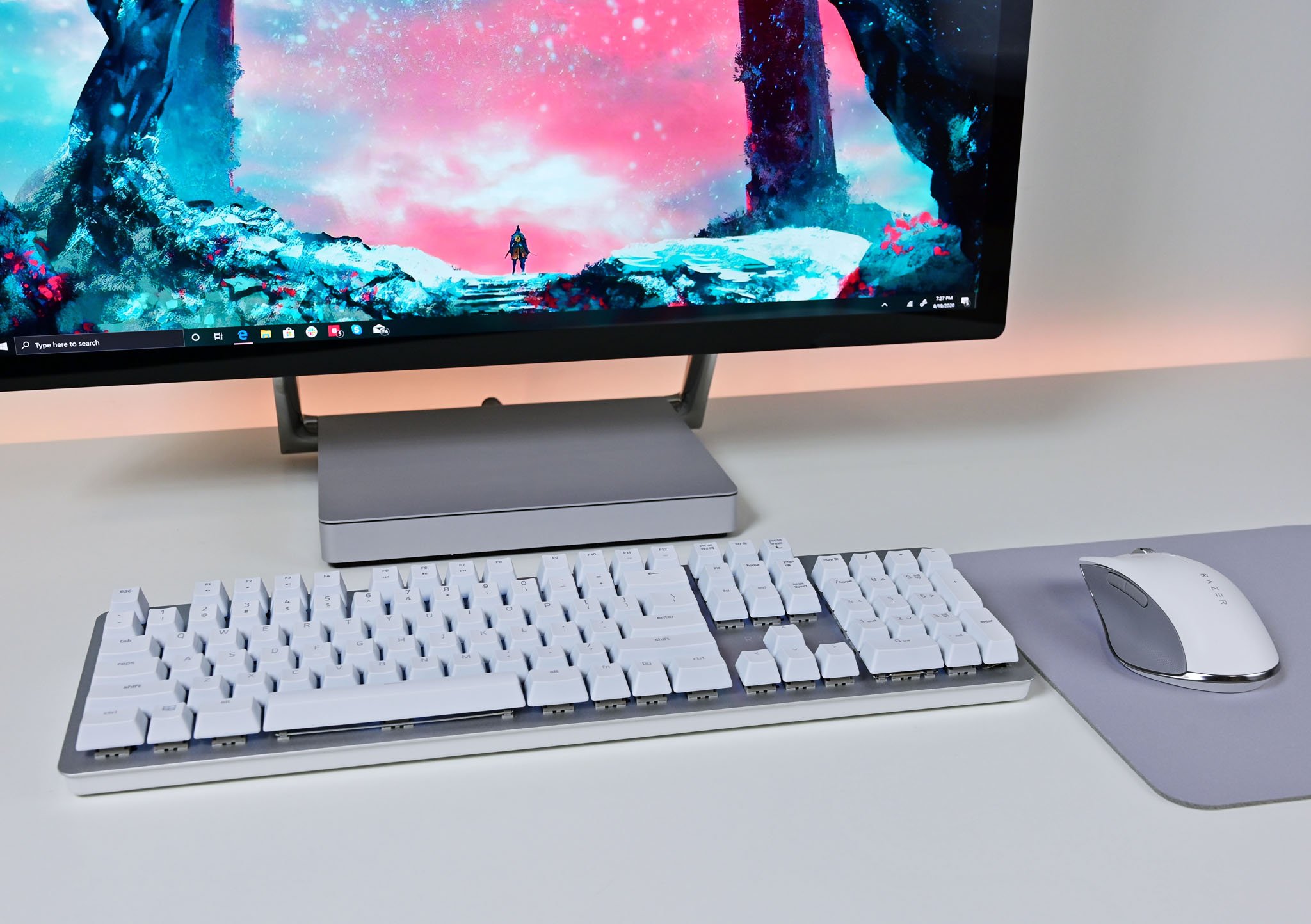"The average person spends 40% of their day working, 40 hours a week, and around 40 years of their life" is how Razer starts its PR spin on its new co-branded and developed mouse and keyboard accessories. While those numbers are sobering, they offer a stark reminder that, like owning a good bed, using ergonomic PC accessories to reduce stress and injury is worth some thought.
The Pro Click, Pro Type, and Pro Glide computer accessories, which are made in conjunction with Humanscale's knowledge of design, offer a clean, non-gaming aesthetic that would make any Surface Studio owner proud. These wireless accessories are not low-cost, but they do provide some things I've been looking for, including backlit LED lights on a 2.4GHz keyboard.
I've spent the last few weeks using these tools, trading in my usual Razer gamer-focused ones. Here is what I think and what you need to know.
Razer Pro Click wireless ergonomic mouse
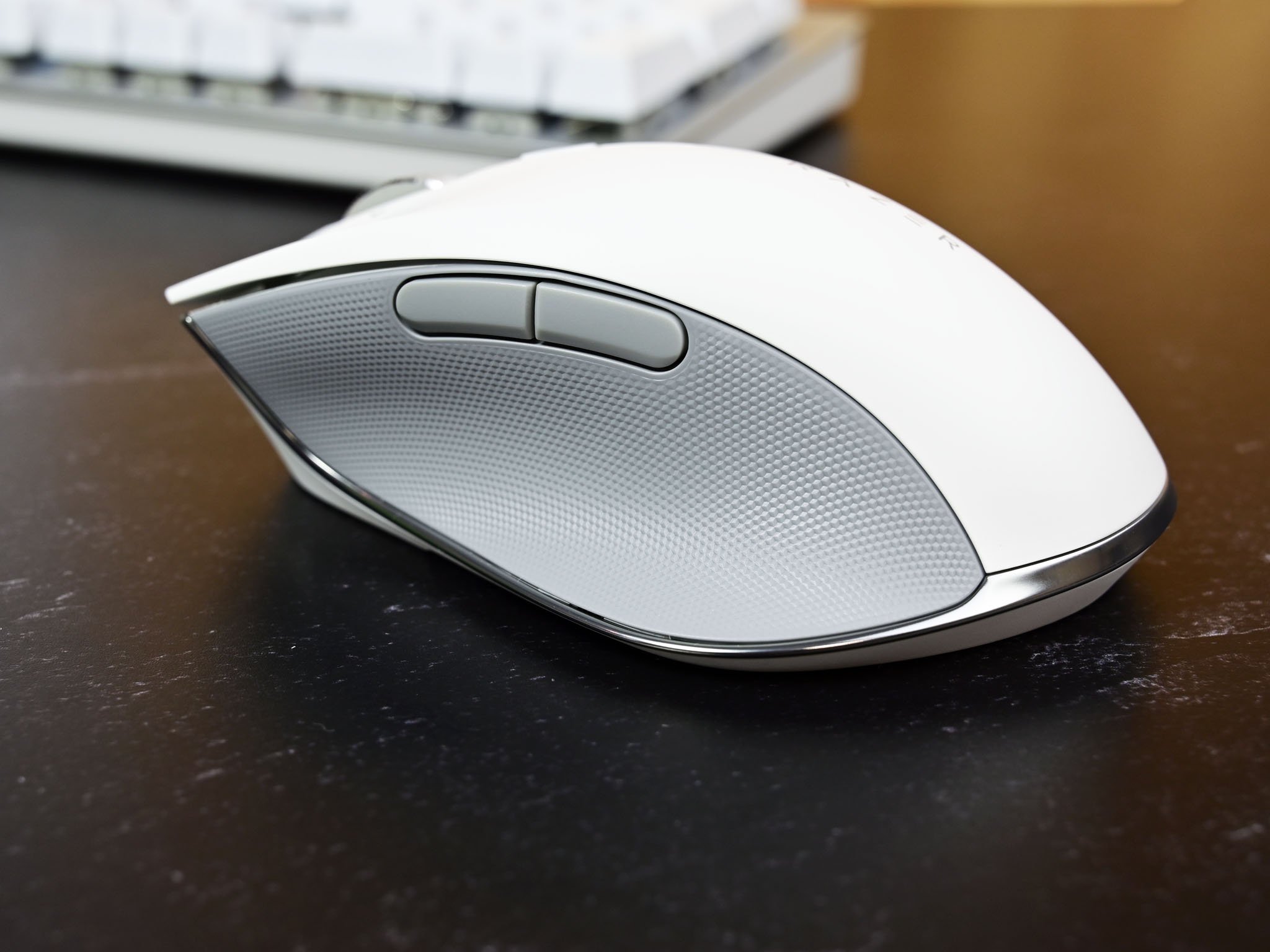
The $100 Pro Click is the most accessible of all the new products and likely to be the most popular. The Pro Click follows other high profile, pro-level office mice like Microsoft's $99 Surface Precision Mouse and Logitech's popular MX series.
The Pro Click is designed very similarly to those mice with a large palm grip and design that "prevents wrist anchoring onto the work surface and instead encourages the use of large arm and shoulder muscles, which are less likely to fatigue than delicate wrist and hand muscles."
- Ergonomic
- Up to 50M clicks
- Up to 16,000 DPI (up to 5 DPI stages stored)
- Razer 5G Advanced Optical Sensor
- 1000 Hz polling rate
- Tilt-click scroll wheel
- Eight programmable buttons
- 400 hours of battery life via Bluetooth; 200 via 2.4GHz wireless
- Recharges via micro USB (included)
- Multi-host connectivity: Up to 4 devices (2.4GHz + BT)
- Razer Synapse 3 enabled (optional)
- Weight: 105 grams
- Available now: $99.99
No frills are spared. There's Razer's famed optical "5G" sensor with up to a ridiculous 16,000 DPI and blazing fast 1,000Hz polling. There are also eight programmable buttons, a tilt-scroll wheel, and options to use it via Bluetooth or 2.4GHz with the included dongle. That dongle fits in a tiny compartment on the mouse's underside for transport.
All of this is packed into an earth-friendly package with recycled materials, which is a nice touch.
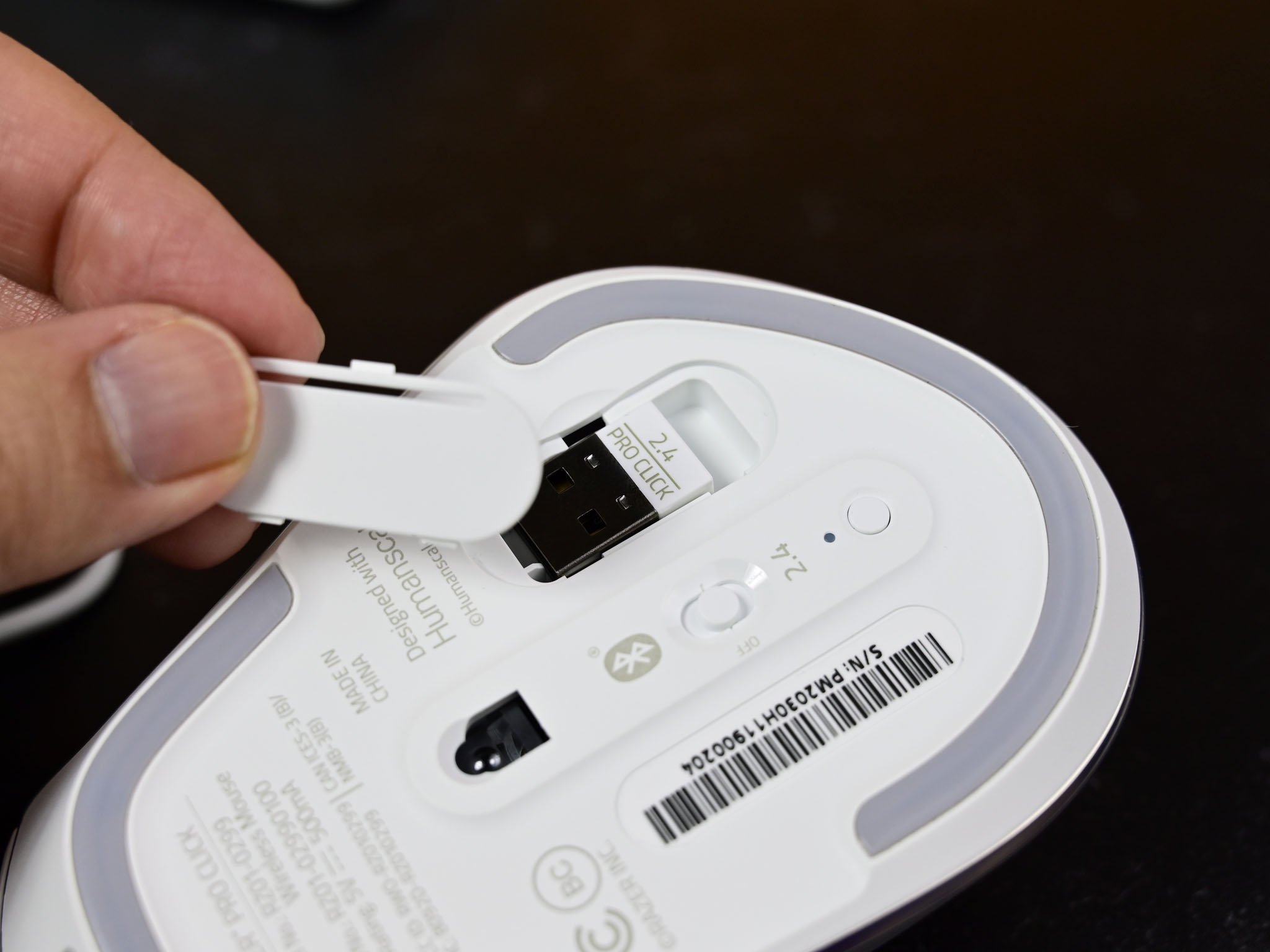
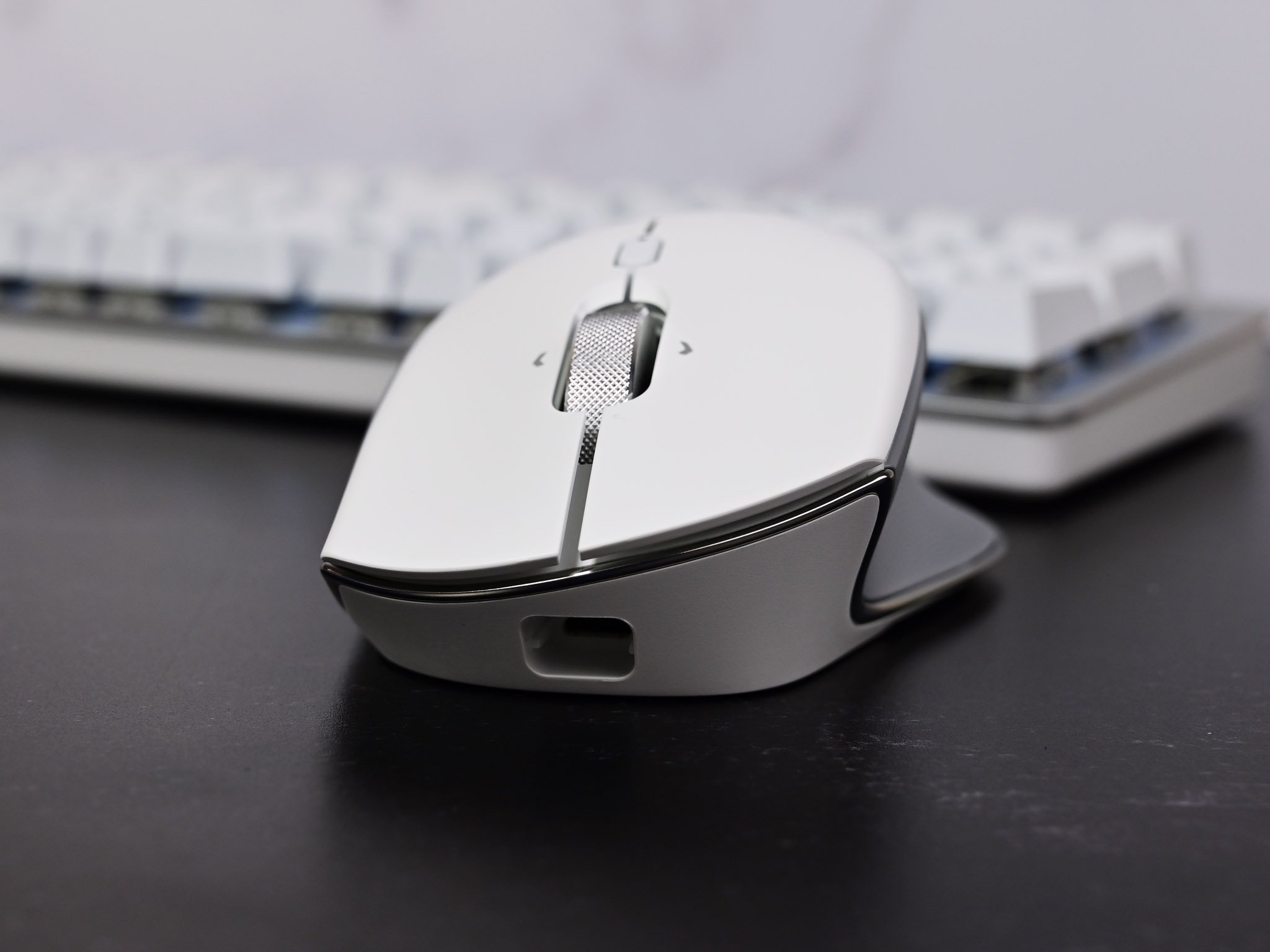
Battery life is particularly good with the Pro Click getting up to 200 hours with the 2.4GHz connection, and double that with Bluetooth. Some of that is because there is no RGB lighting to power, unlike Razer's gaming mice. Unfortunately, to recharge, you will need to finesse the included micro USB cable into the front port. It's not bad, but you'll want to avoid losing the included two-meter cable as the port cutout is too small for most off-the-shelf micro USB connectors.
Here is what I can tell you about the Pro Click: it's an excellent mouse.
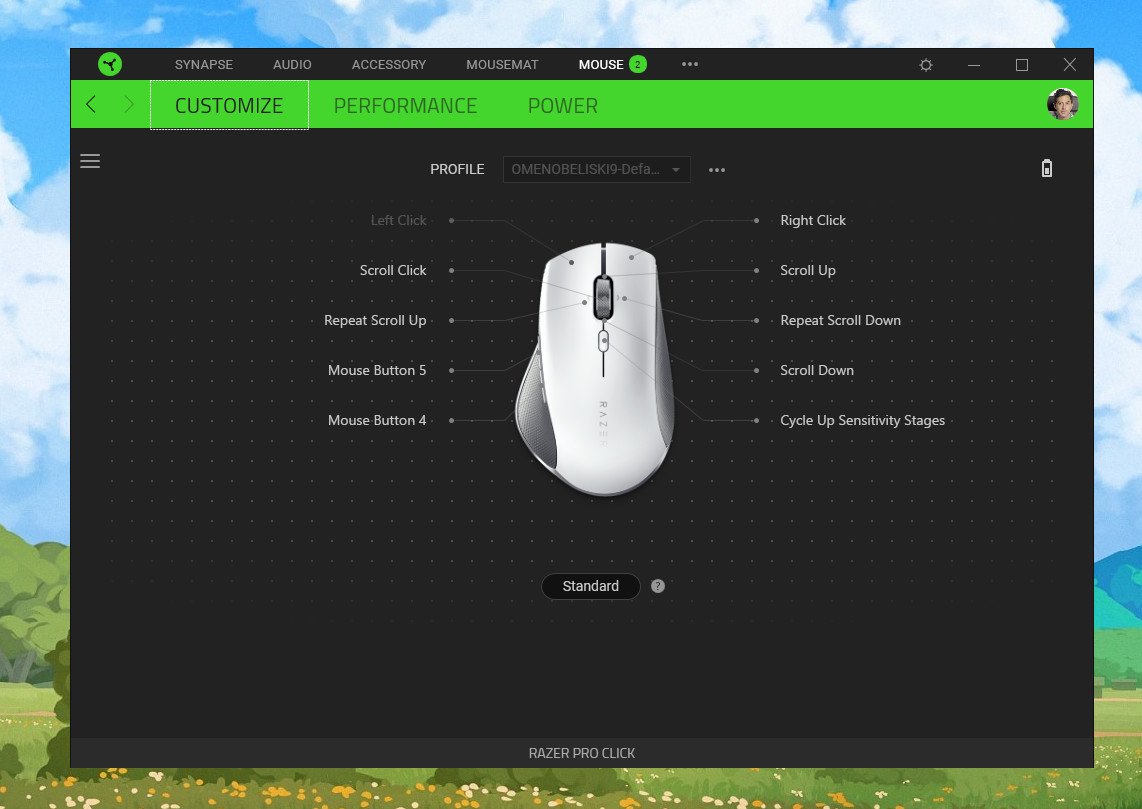
Humanscale touts how is "at a 30-degree angle, which is ideal for optimum comfort", and both companies spent a lot of time researching and refining what works best, ensuring little fatigue. I enjoy how this mouse feels to use, the clicks, and the soft-click wheel. The Pro Click's innards are what is found in Razer's premium gaming mice, making it super accurate (and you can use it for some quick fragging too).
The white and grey color matches the Pro Type keyboard, and it all goes well with a modern office setup. Both companies have also added some extra protection to prevent yellowing of the mouse long-term, but we'll have to see how that holds up. White mice are always a tad risky in that way.
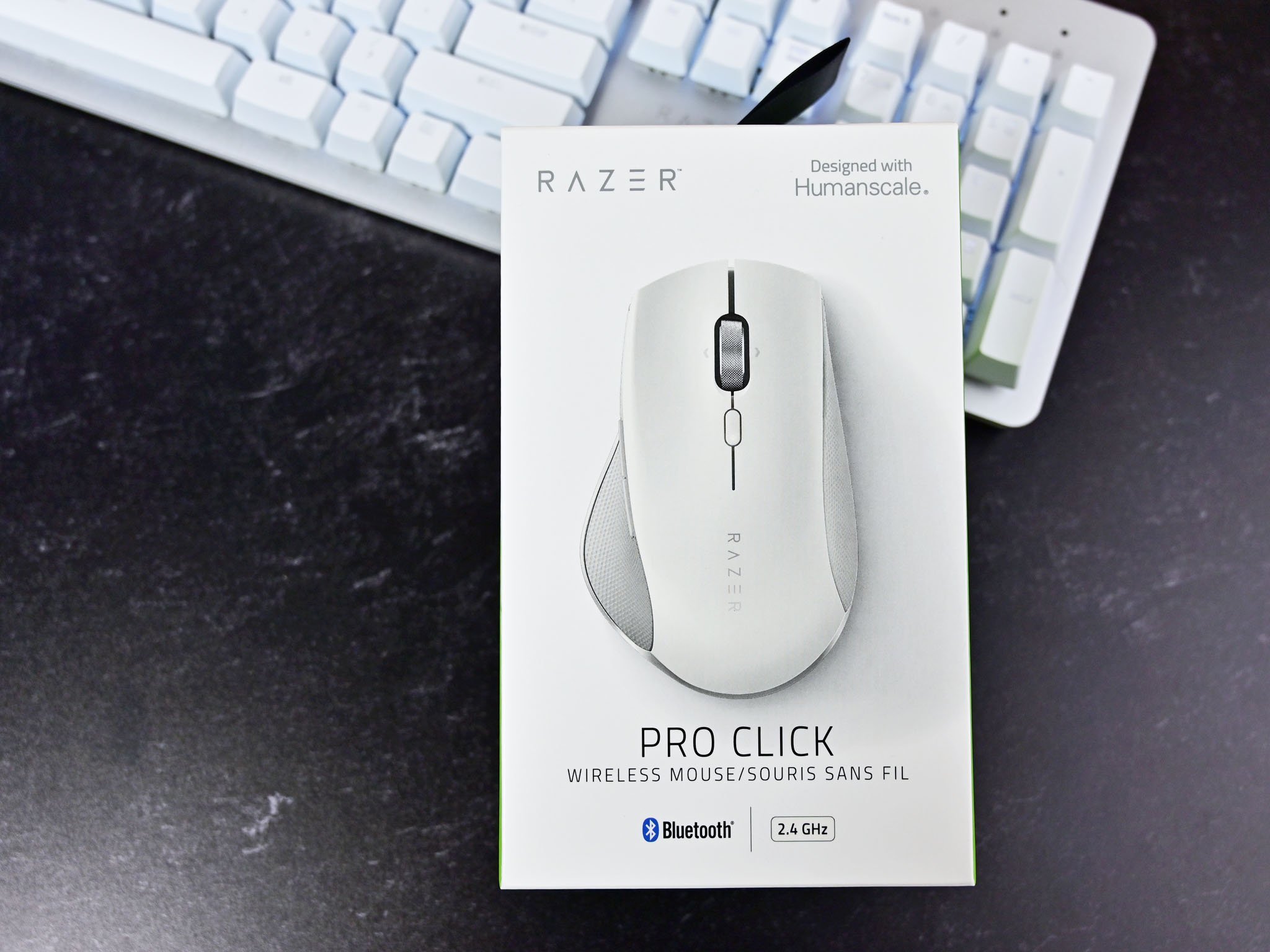
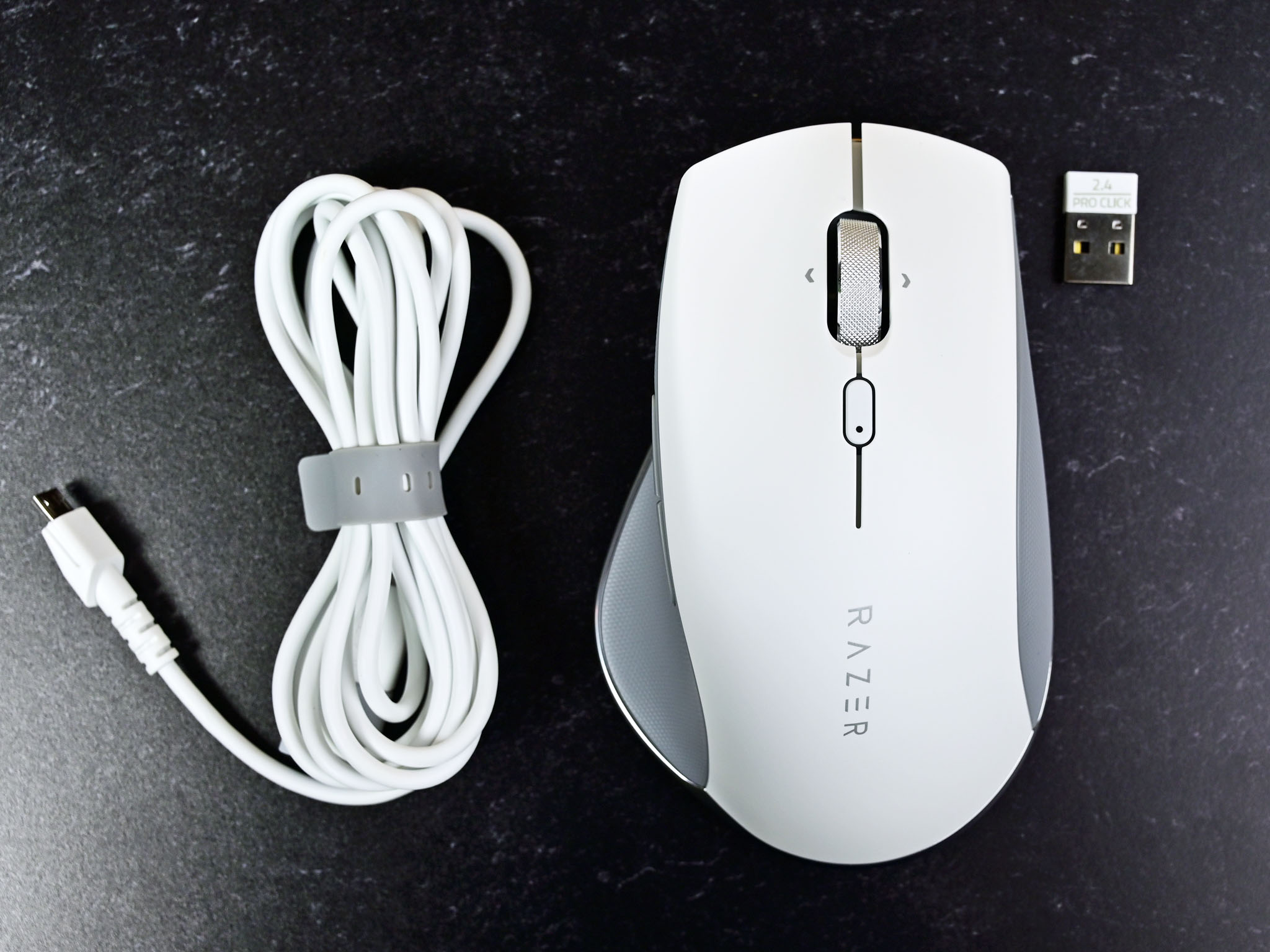
While you can setup Pro Click using Razer's Synapse 3 software, it is thankfully not required. But doing so lets you control DPI presets (which can be toggled directly on the hardware), polling rate, power saving, and of course, program all of those buttons.
Compared to the Surface Precision, the Pro Click is substantially lighter at just 105 grams versus 138 grams of Microsoft's mouse. Yet, despite the lighter weight, Razer's mouse is more significant with more area filling up your palm, giving a more substantial feel. Clicking is also lighter and quiet with Pro Click.
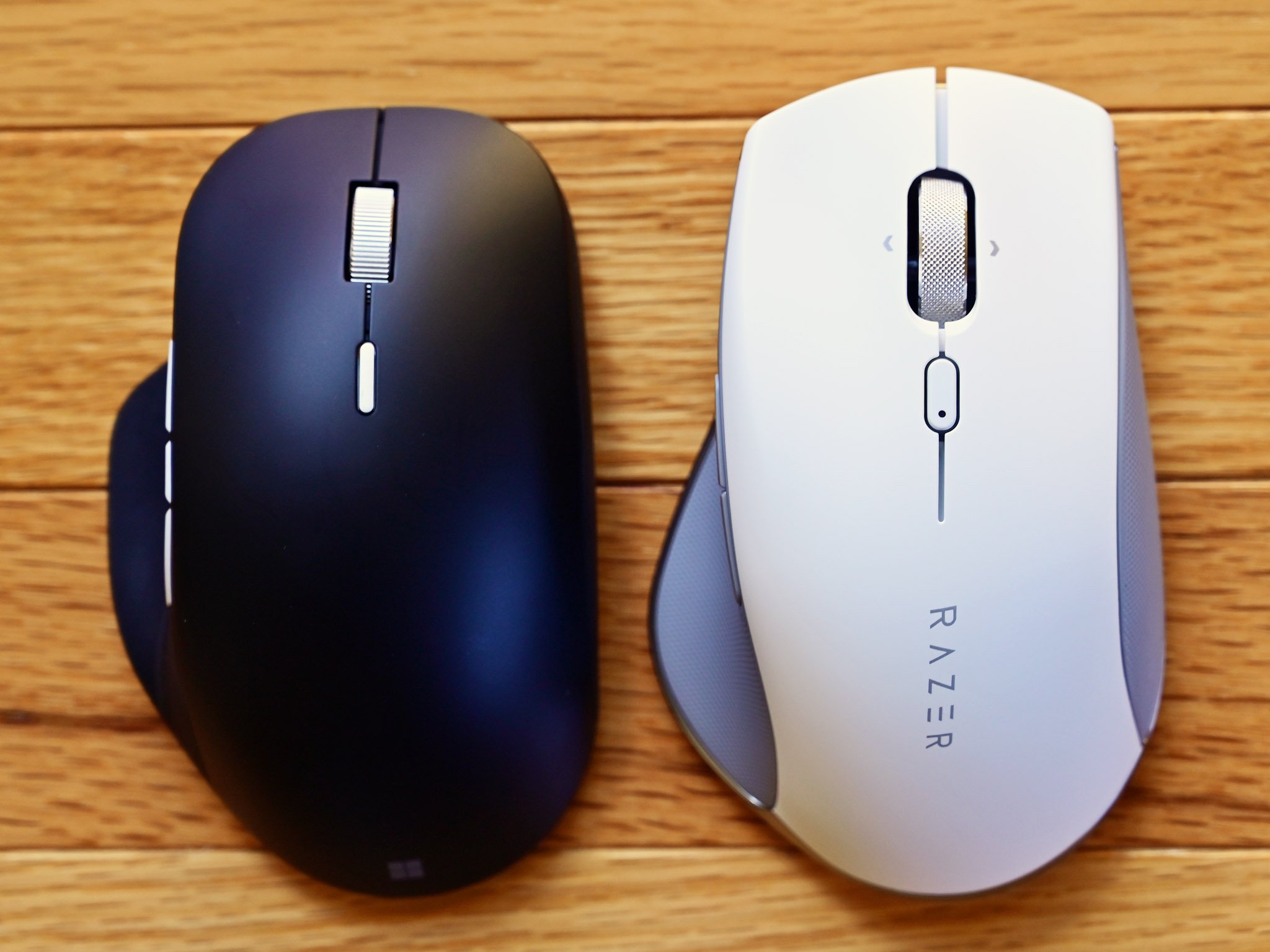
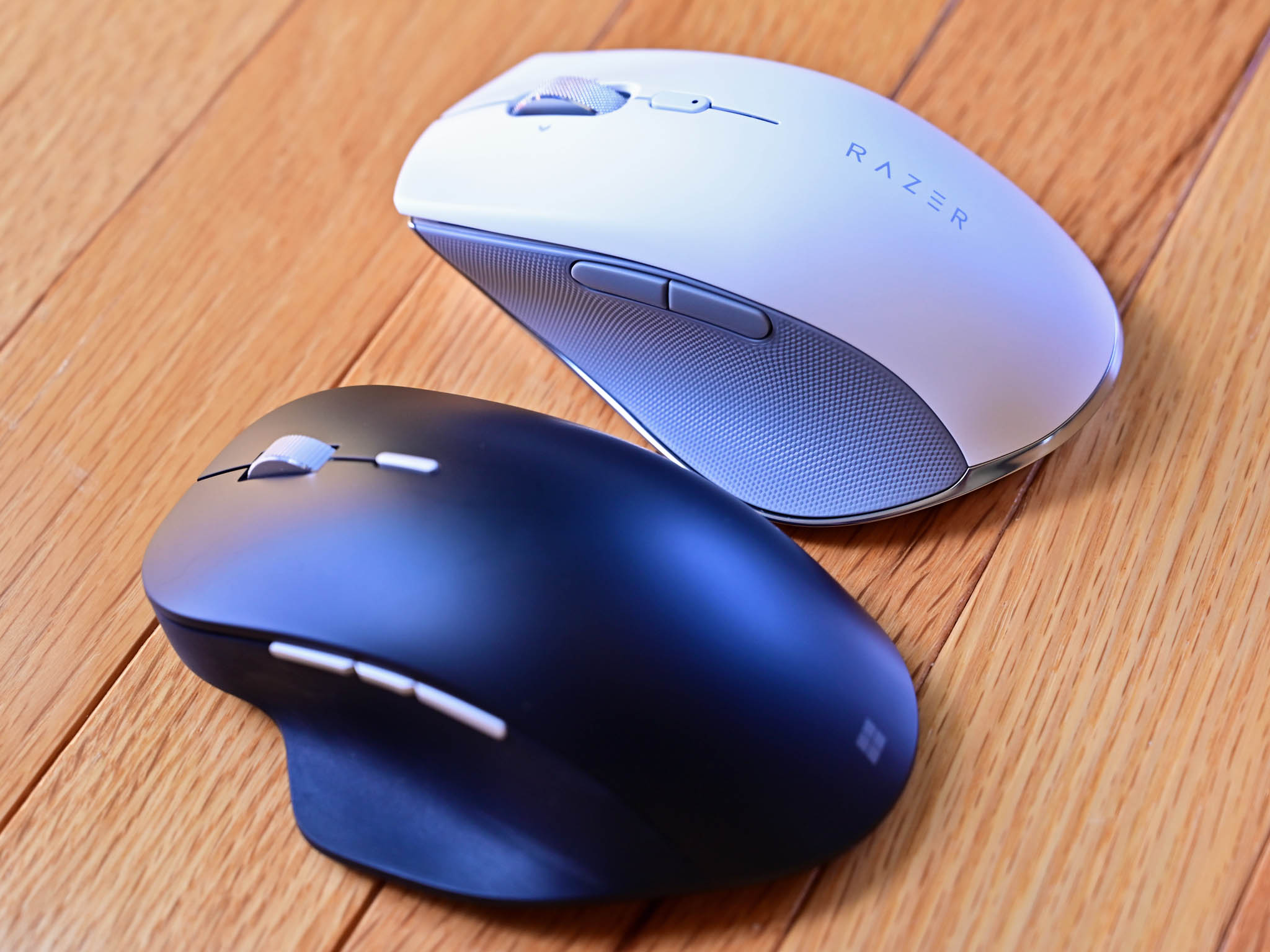
And yes, you can use this mouse when plugged in and charging. That may seem obvious, but you'd be surprised as to how many mice get that wrong.
Overall, I'm presently surprised by the Pro Click. I usually use Razer's excellent Basilisk Ultimate, but at least for now, I'm sticking with the Pro Click.
There's also a $10 matching mouse mat, which is nice, but basic. It's high-density rubber foam with a textured micro-weave cloth and anti-slip base. You're buying it mostly to complete the set here, not because of any special features.
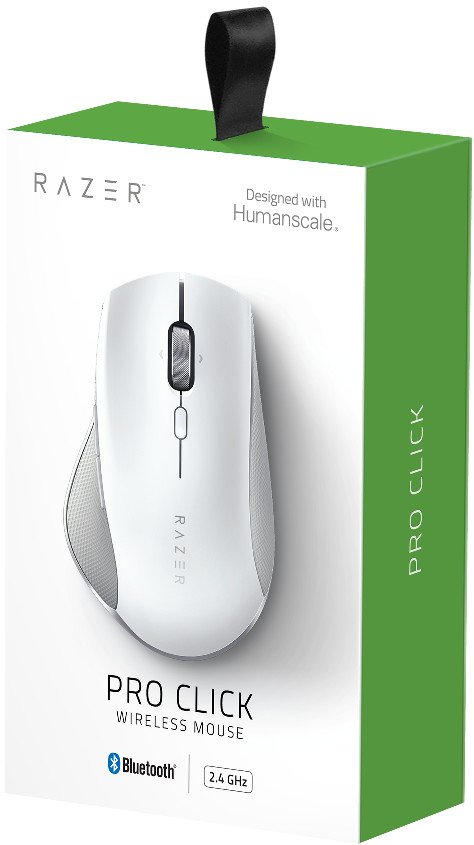
It's a comfy office mouse with a gaming pedigree
Co-designed with Humanscale for looks and ergonomics, the Pro Click rivals the best from Microsoft and Logitech for premium productivity mice.
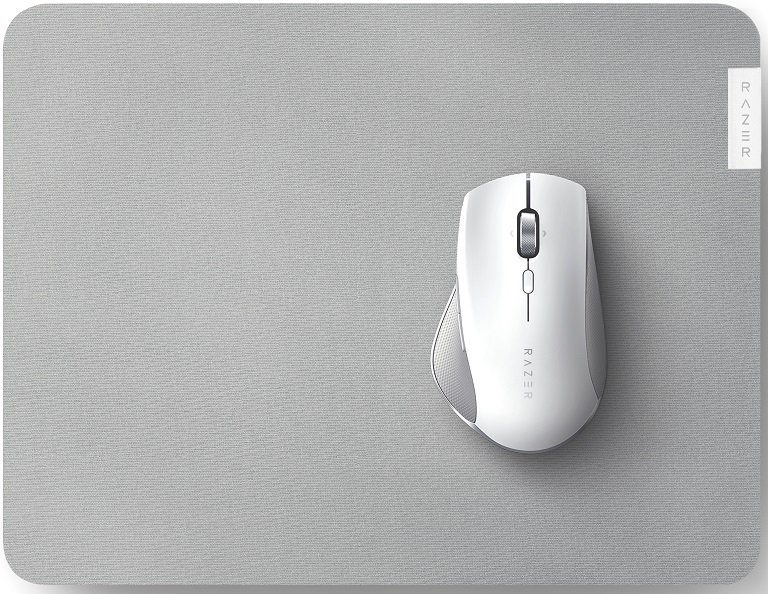
Complete the set
If you're getting a $100 ergo mouse, you might as well drop the extra $10 for the matching mouse pad, right?
Razer Pro Type keyboard
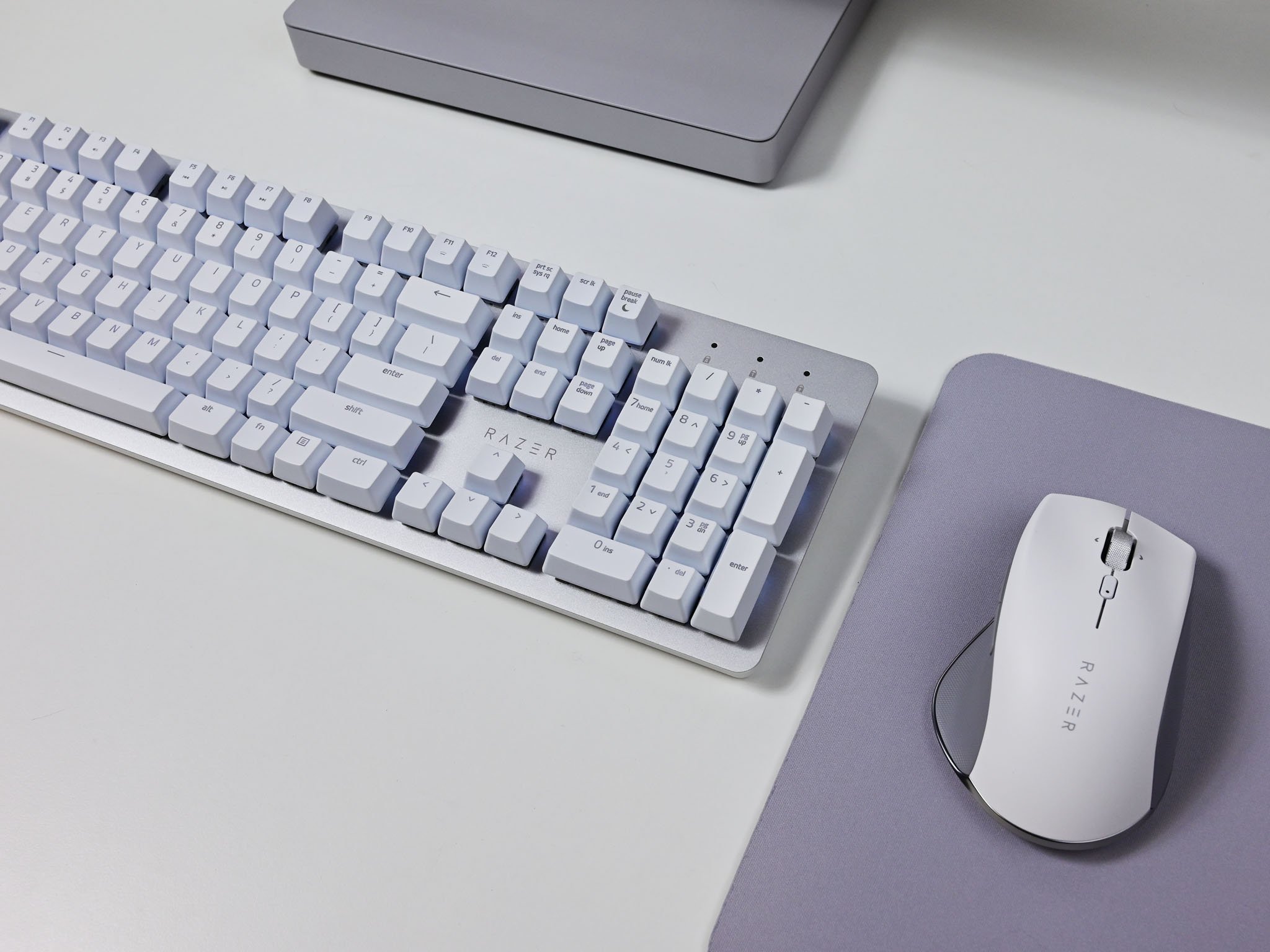
While you could opt for the Pro Click mouse, Razer also has a rather pricey $140 keyboard to match. Just like the mouse, this keyboard is co-branded with Humanscale, so ergonomics and office environments are a consideration.
The Pro Type is a full-sized keyboard, a nice change from my 60-percent Huntsman I've been using. It has a metal top cover, which is a lovely silver. It uses Razer Orange mechanical switches, which deliver a "quiet but tactile" typing experience. I like orange, as it's not too loud, and it has a gentle thud to it when used. There are the usual 10-key rollover and a soft-touch coating on the keys, which feels great.
- Full-sized keyboard
- Ergonomic design with soft-touch coating
- Metal top cover
- Up to 80M keystrokes durability
- 10-key rollover
- Razer Orange Mechanical Switches (quiet, tactile)
- Multi-host connectivity: Up to 4 devices (2.4GHz + BT)
- Programmable keys with macro recording
- White LED-backlit keys
- Battery life: Up to ~12 hours on Bluetooth and 2.4GHz with back-lighting on; up to ~84 hours without backlighting on Bluetooth, and ~78 hours on 2.4GHz
- Recharges via Type-C braided 2M cable (included)
- Razer Synapse 3 enabled (optional)
- Size: 442 x 133 x 39
- Weight: 900 grams
- Available now: $139.99
But what makes the Pro Type unique is the wireless ability. Keyboards with Bluetooth and 2.4GHz connectivity are not new, but I have seen few truly wireless keyboards that are also backlit. Microsoft sure does not do it. The Pro Type though, has genuinely nice, cold white LEDs emanating from below. Sure, the LEDs considerably reduce battery life on 2.4GHz from around 78 hours to just 12, but at least it is my choice.
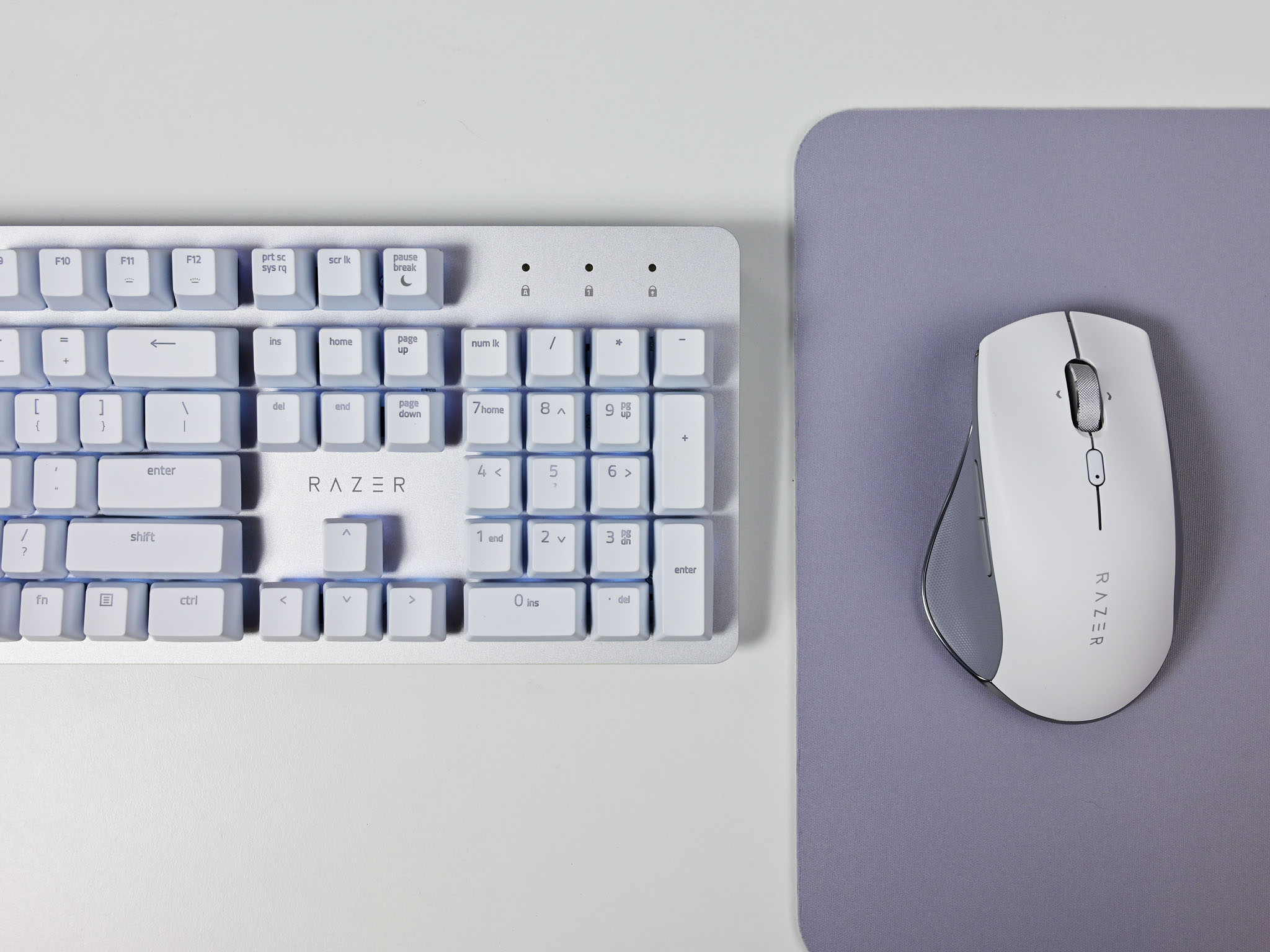
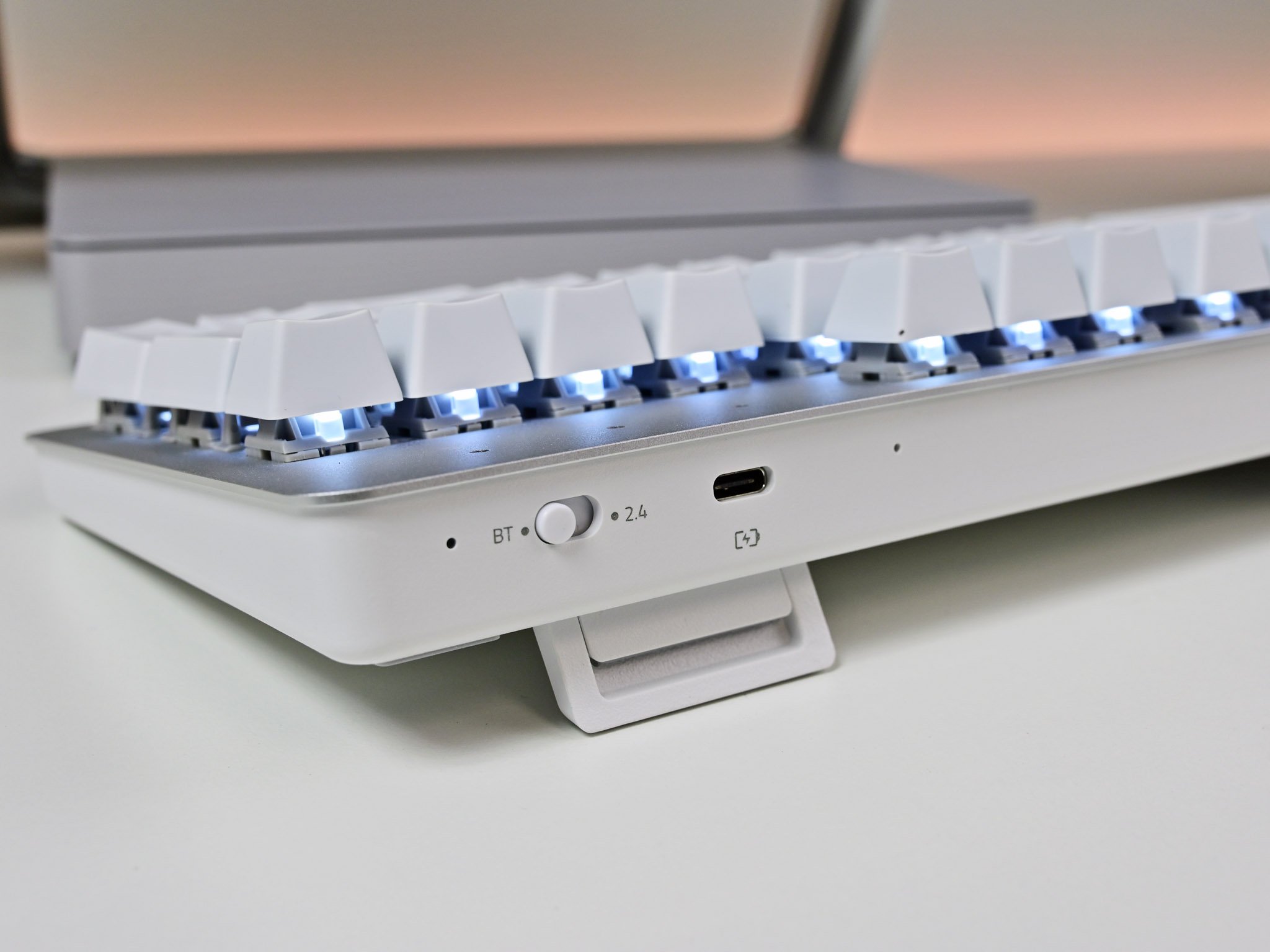
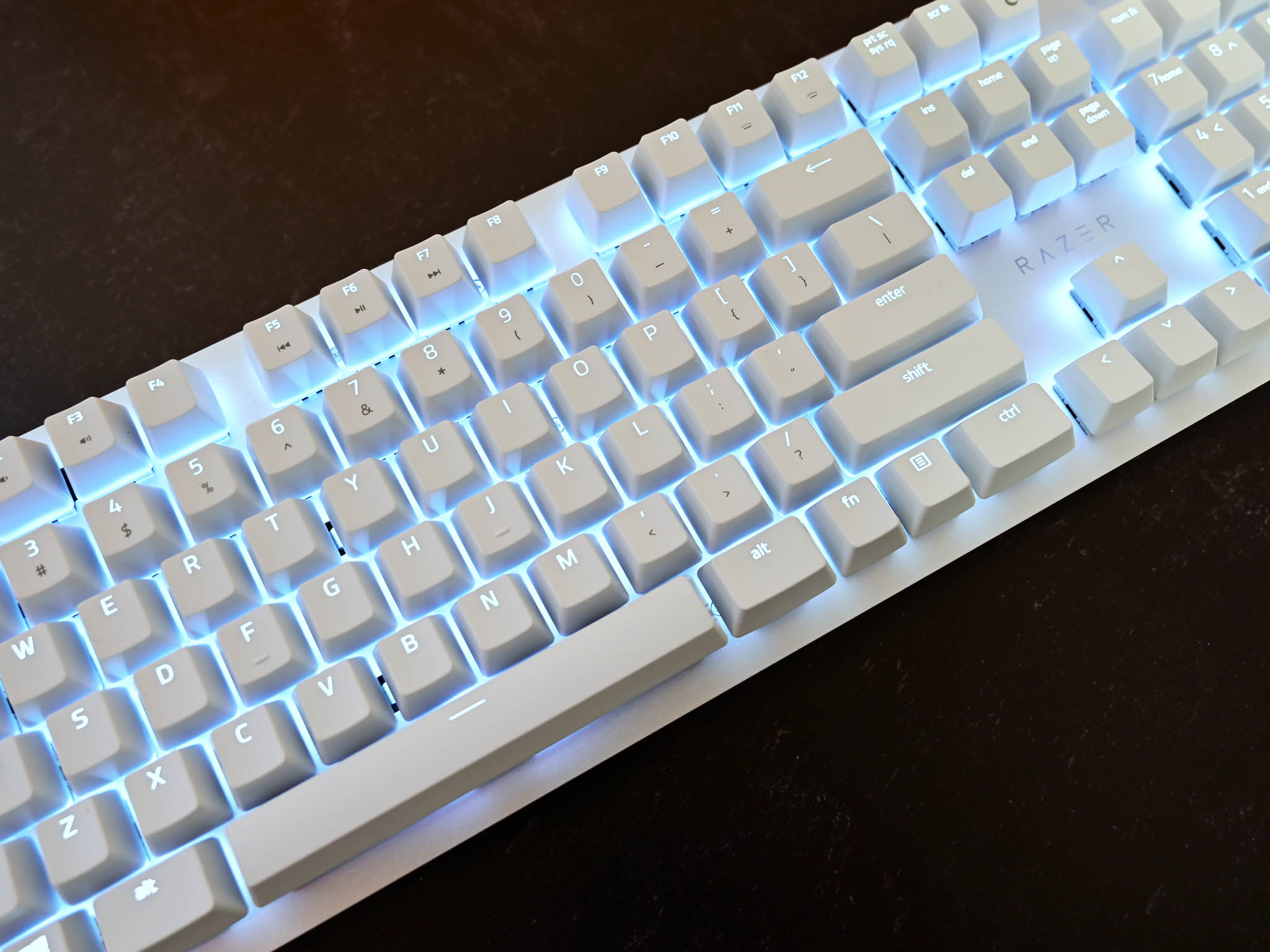
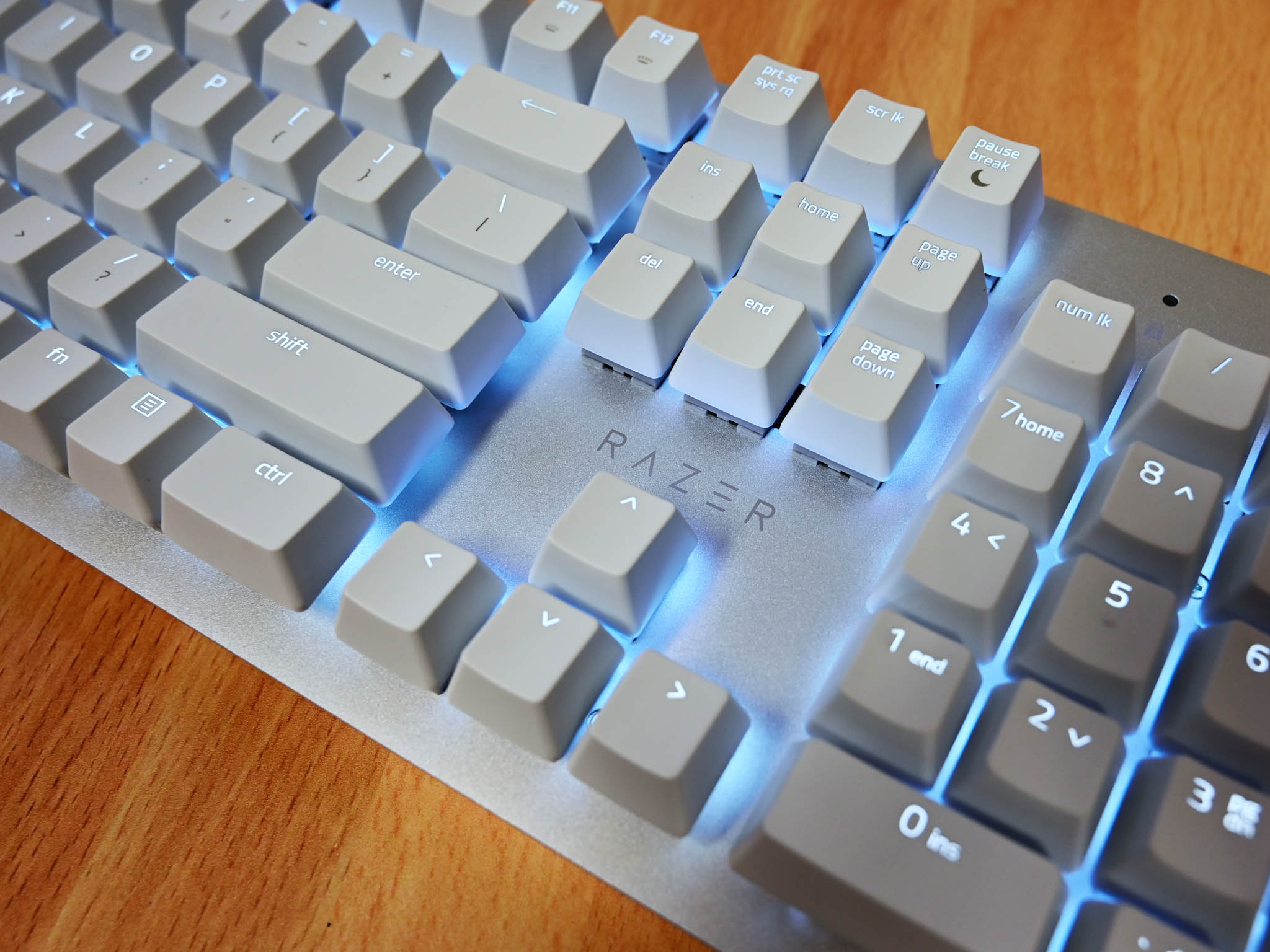
On the downside, like all wireless keyboards I have ever used, you do run the risk of interference with the signal, which can be a mind-numbingly frustrating experience. Such an issue usually happens with Bluetooth, but even on 2.4GHz, it can happen. Luckily, I did not experience much of that here during my review period.
Recharging is simple with the included Type-C braided cable, and you can optionally use this keyboard wired the whole time. Like the mouse, Razer Synapse 3 is optional. Still, the software gives advanced configuration abilities like controlling the brightness of those LEDs, switching off, breathing or static effects, and other power-saving tricks. You can control LED illumination via FN + F11/F12 too, which is a nice touch.
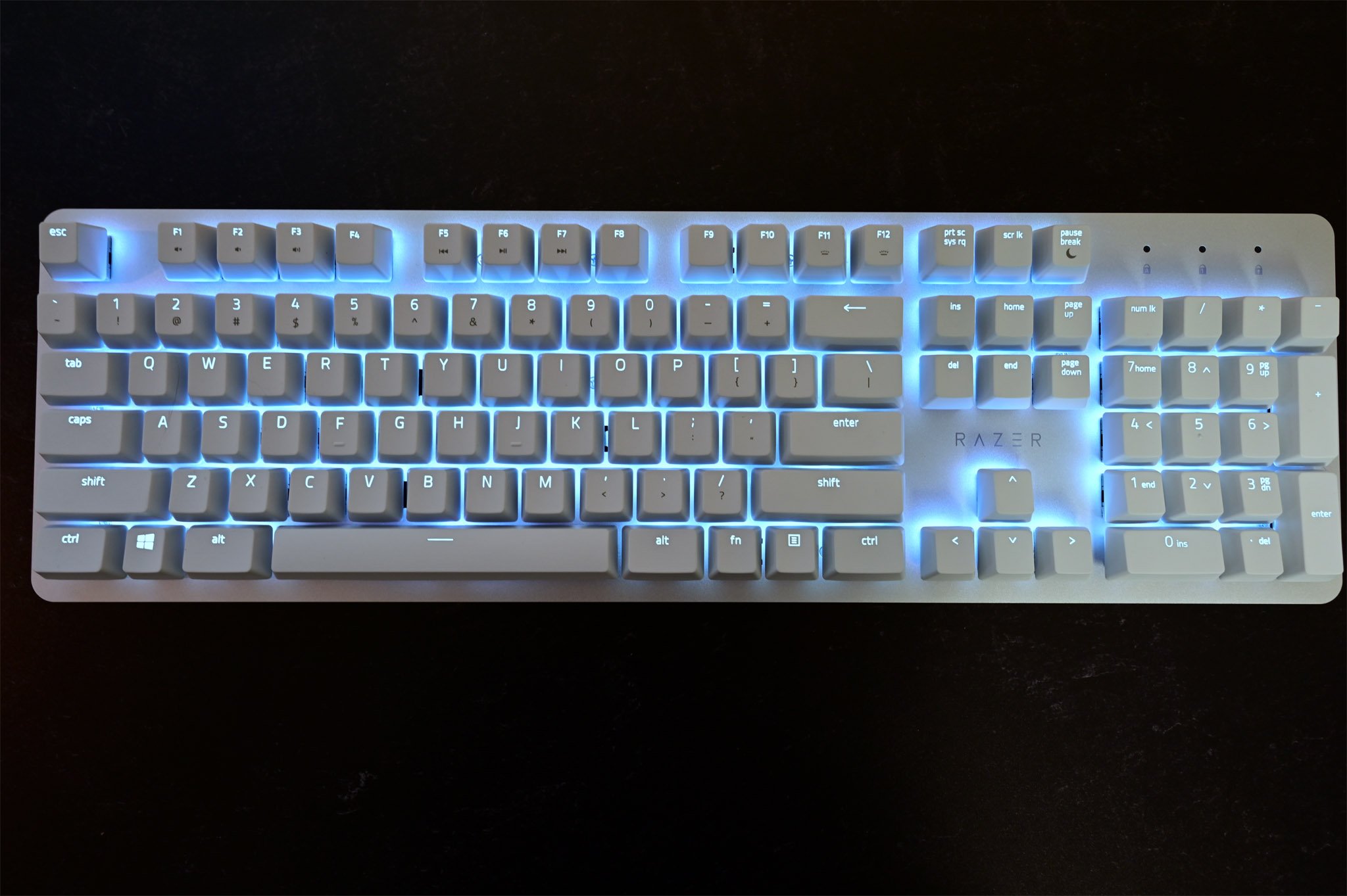
Sadly, there is no dedicated media or volume keys, something I appreciated on Razer's refreshed Ornata (another one I regularly rotate to).
I'm also disappointed that Razer and Humanscale did not offer or include a matching wrist rest. I am a massive fan of these keyboard accessories as they give some extra cushion to your bottom palms. Surprisingly, neither company considered such a feature to be part of the ergonomic spiel here, even if they would have charged extra for it. Luckily, third-party wrist rests are easy to obtain even from Razer. Just good luck finding a white one.
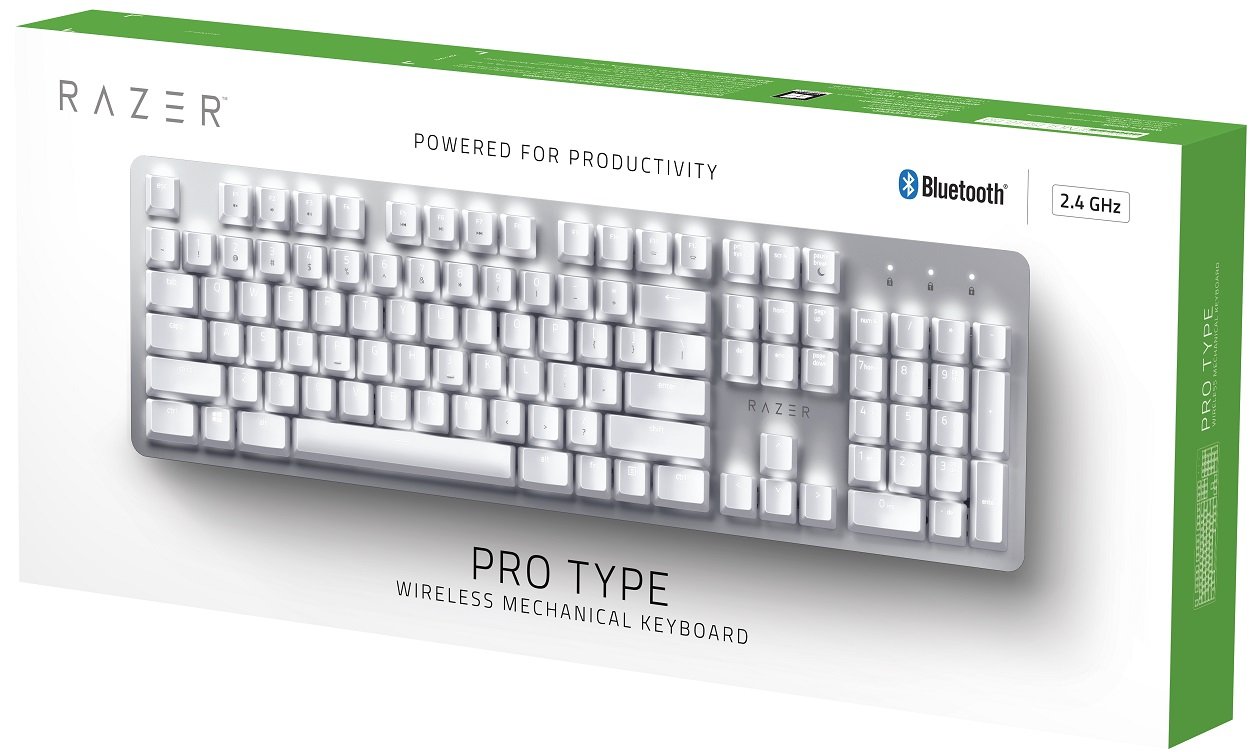
Orange switches but a white exterior
Razer's new Pro Type keyboard brings 2.4GHz or Bluetooth wireless to your PC with a gorgeous white design. But it's those LED backlit keys that have us swooning. Too bad about no wrist rest.
Razer and Humanscale easy to recommend
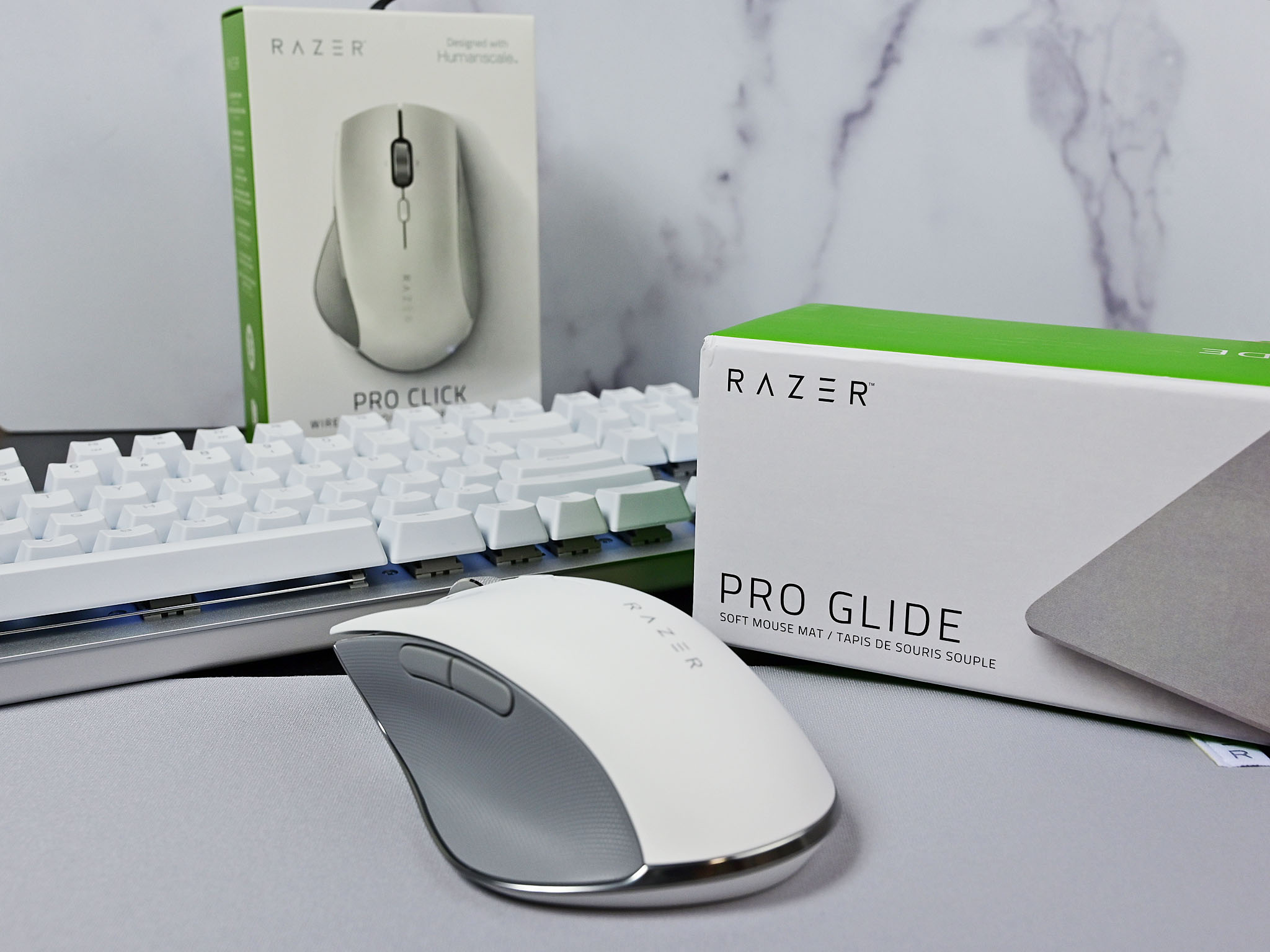
It's neat to see Razer pivot from just a gaming company to a prosumer one as well. This transition started with its non-gaming $200 Razer Opus headphones, which are recommended for the price.
Humanscale, "the world's premier experts in office ergonomics," is an excellent match with Razer. It's clear they have the ergo and design chops to match what Razer can produce, and the result here is distinctive and high quality.
The whole "Pro" aesthetic here with clean, white, minimalism works well for matching PC and office setups. There is a very modern look to all of this, and it's the right tone to hit when differentiating from the all-black gaming world known to Razer.
If I had to pick one of these accessories, I think the Razer Pro Click is the one to get. It's a well-done mouse that has become my go-to for the foreseeable future. The Pro Type is also incredibly useful, but besides the look, you have to decide if you like Orange switches (I prefer them). I'm simply glad I can have a wireless keyboard setup now and get some of that sweet LED backlighting.

It's a comfy office mouse with a gaming pedigree
Co-designed with Humanscale for looks and ergonomics, the Pro Click rivals the best from Microsoft and Logitech for premium productivity mice.

Daniel Rubino is the Editor-in-chief of Windows Central. He is also the head reviewer, podcast co-host, and analyst. He has been covering Microsoft since 2007 when this site was called WMExperts (and later Windows Phone Central). His interests include Windows, laptops, next-gen computing, and wearable tech. He has reviewed laptops for over 10 years and is particularly fond of 2-in-1 convertibles, Arm64 processors, new form factors, and thin-and-light PCs. Before all this tech stuff, he worked on a Ph.D. in linguistics, performed polysomnographs in NYC, and was a motion-picture operator for 17 years.
